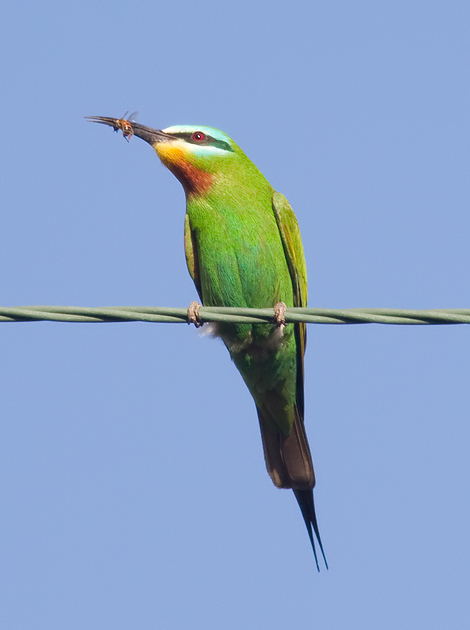April 2011
13th-20th - a week in Cyprus -my favourite 3 photos are below (blue-cheeked bee-eater, red-throated pipit and ortolan). For a full trip report, with more photos, click here or on the blue-cheeked bee-eater.

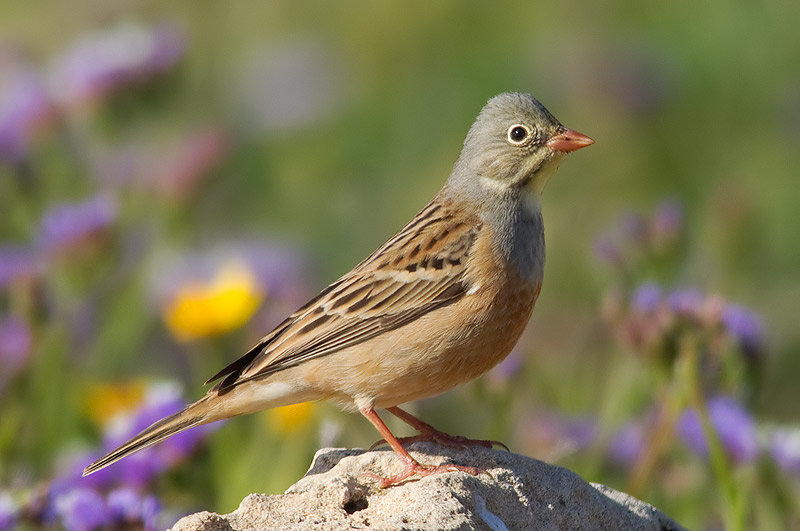
30th. I spent a leisurely morning on the Somerset Levels trying to photograph dragonflies and damselflies at Walton Heath. There were huge numbers of them flying. As well as the species shown in photos below, I also saw a banded demoiselle. There were wonderful opportunities for macro photography, against a sonic background of booming bitterns and croaking green frogs. I scarcely had time to lift my binoculars, and the only birds of note included a bittern, a bar-tailed godwit, a cuckoo and a singing garden warbler.
Hairy dragonfly - male. Close up shows the characteristic hairy thorax.
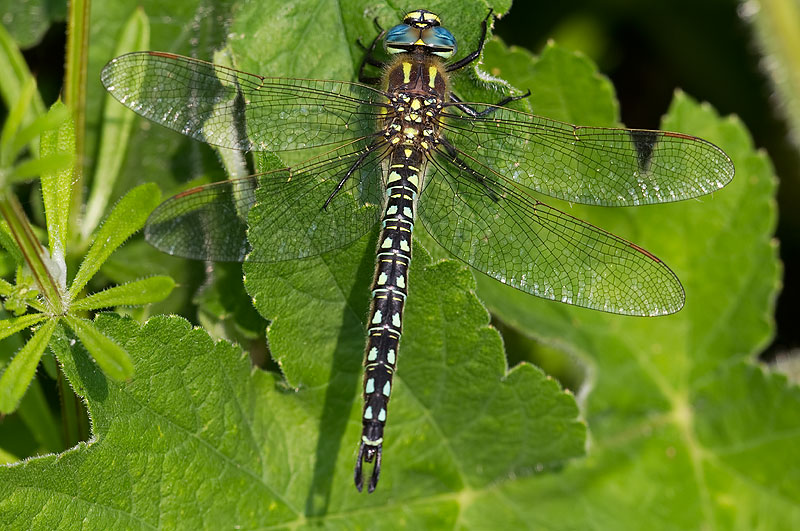
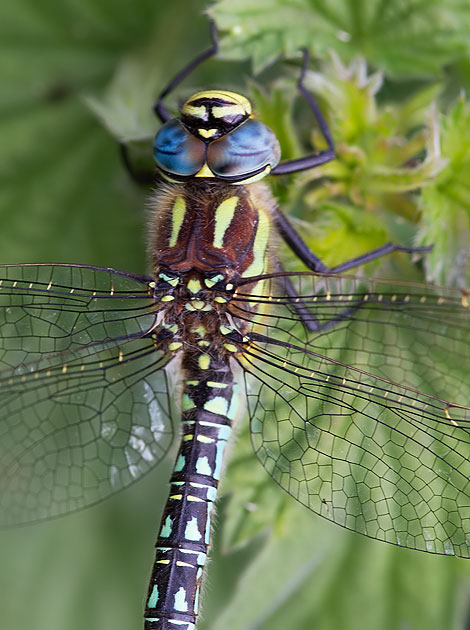
Broad-bellied chaser, recently emerged.
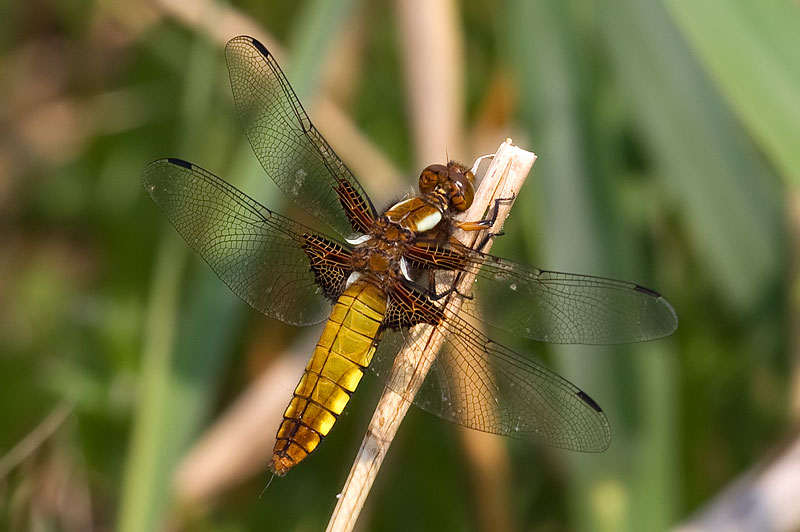
Four-spotted chaser. There were hundreds of these flying.
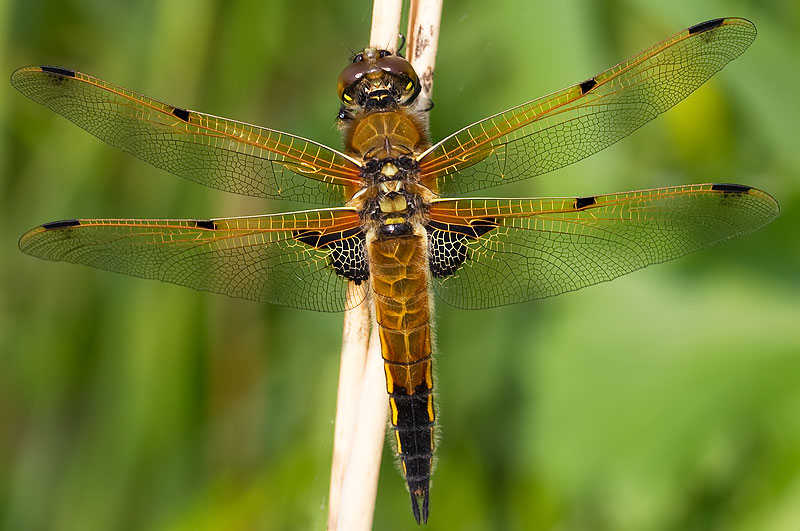
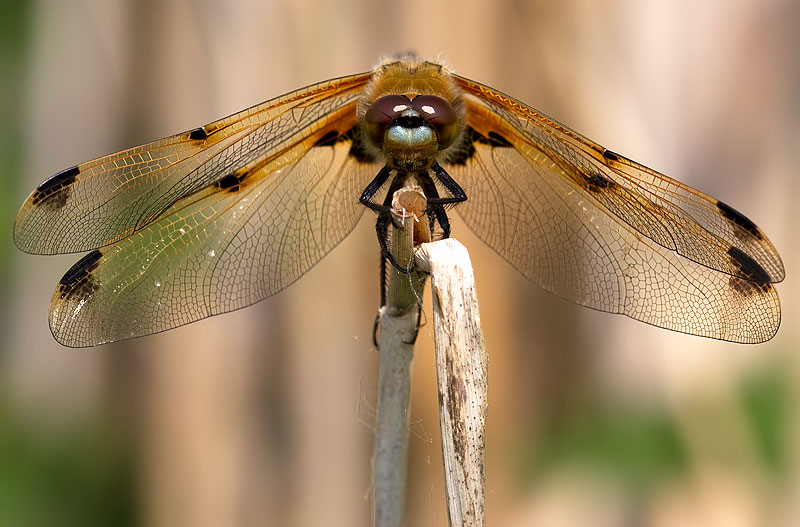
Some individuals (form praenublia) have extensive black on the wing tips.
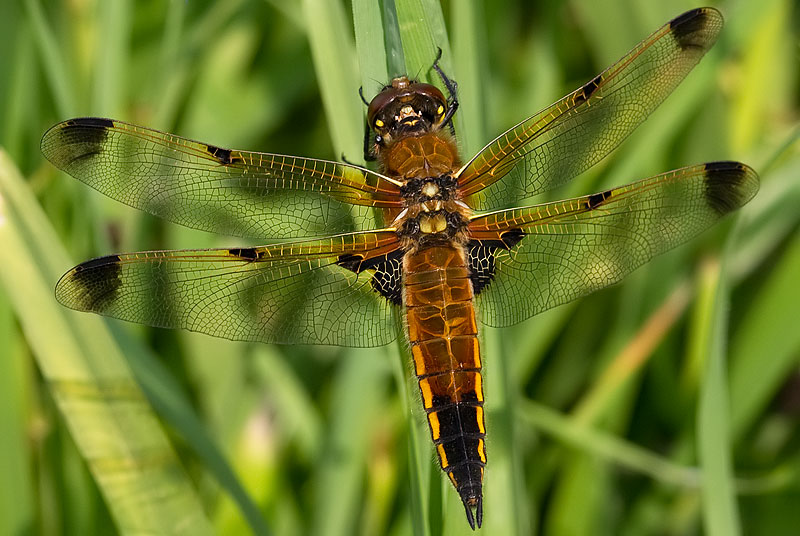
Damselflies included large red.
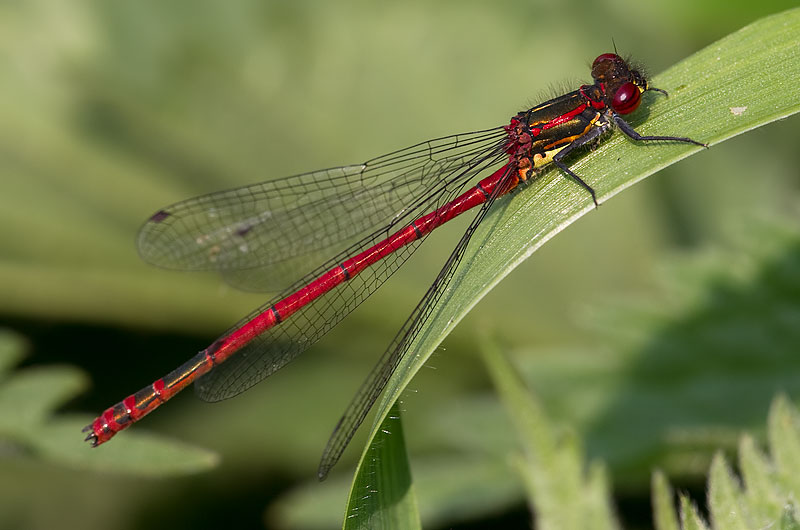
Blue-tailed
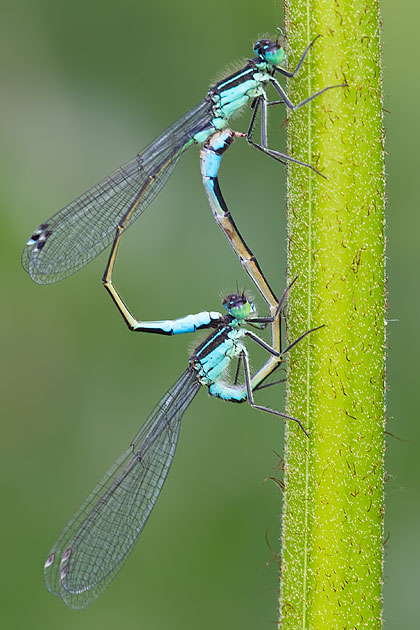
Azure - males identified by the isolated 'U' mark on the first abdominal segment.
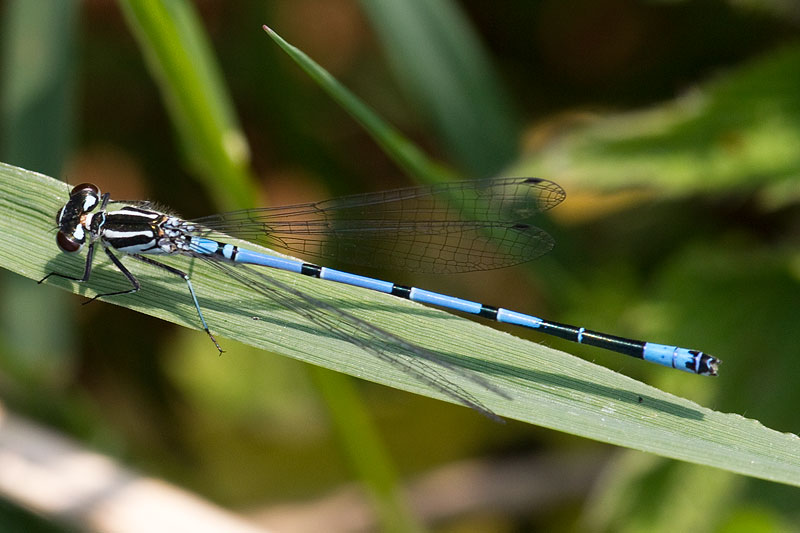
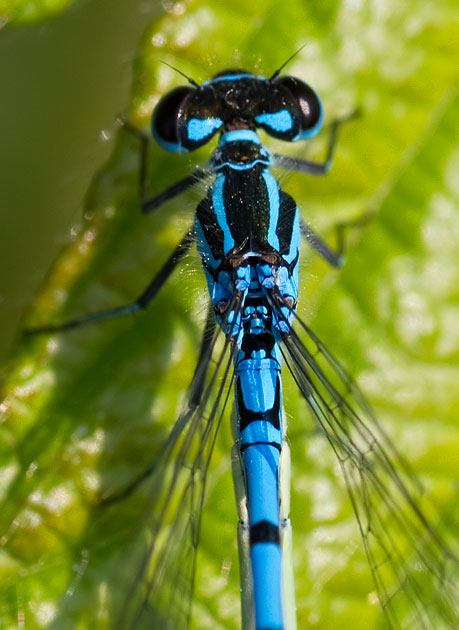
Male variable damselfly - first abdominal segment U has black vertical line joining it to black ring below, and antehumeral stripes incomplete.
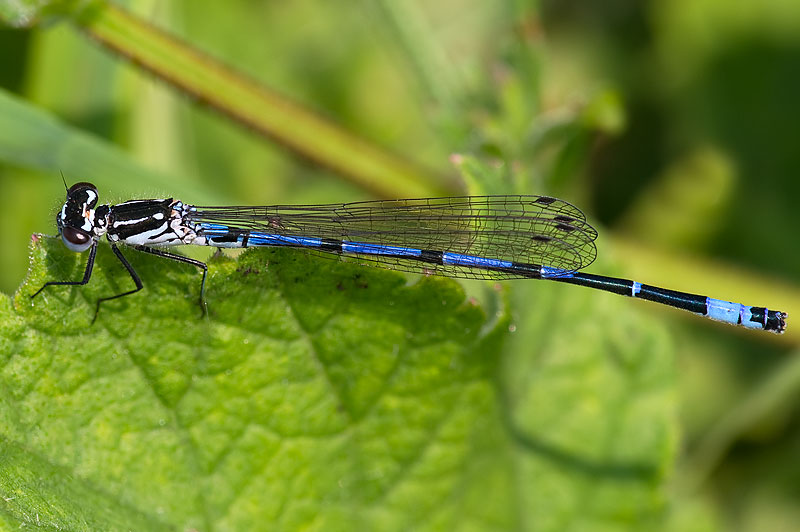
red-eyed damselfly, male
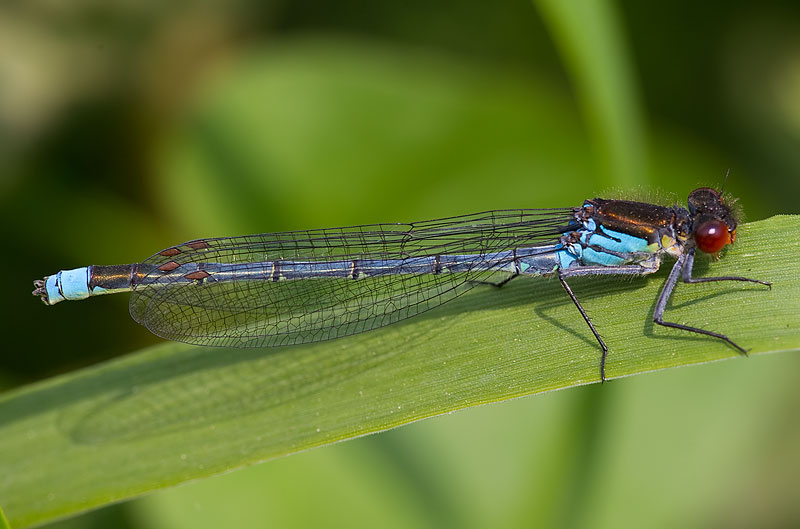
Butterflies included speckled wood and female orange tip.
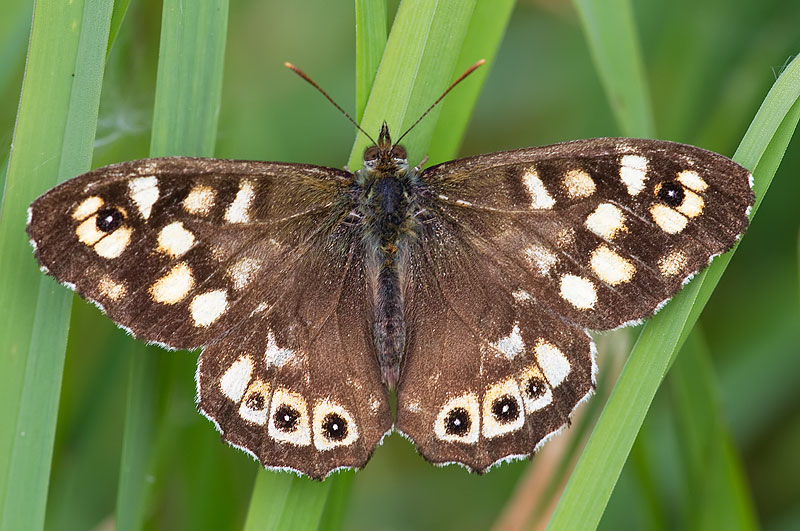
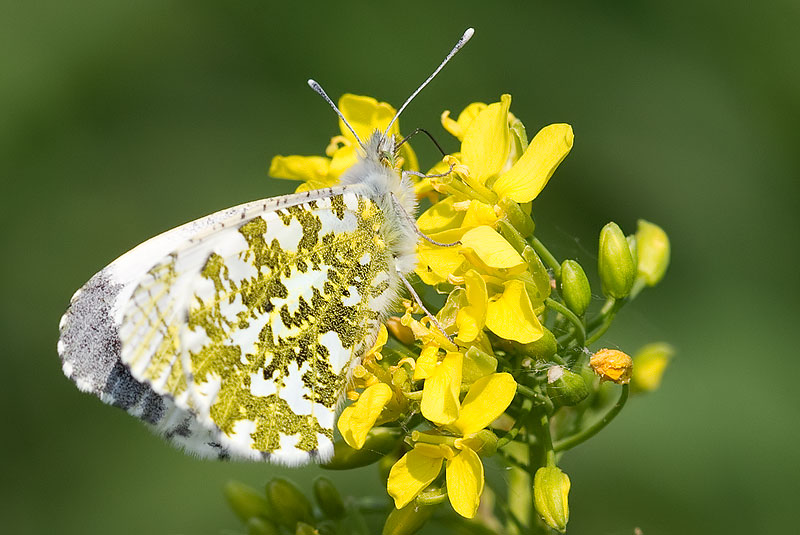
The comfrey leaves are covered with scarlet tiger larvae.
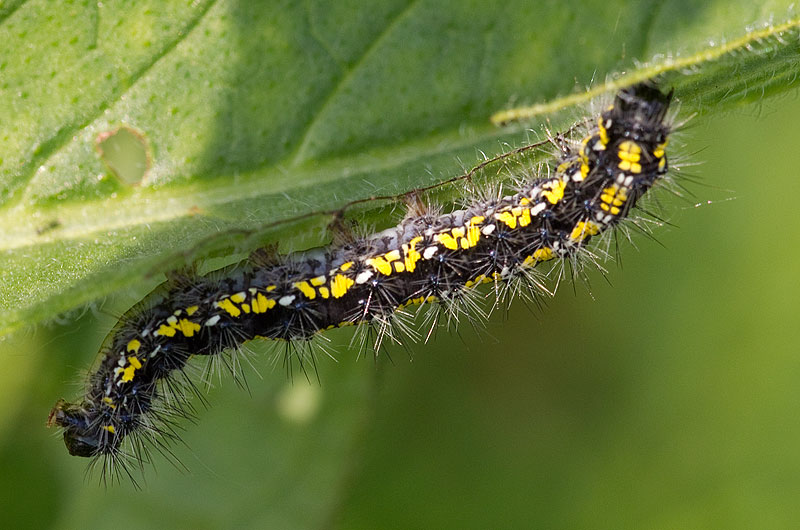
and nursery web spiders Pisaura miribalis were abundant.
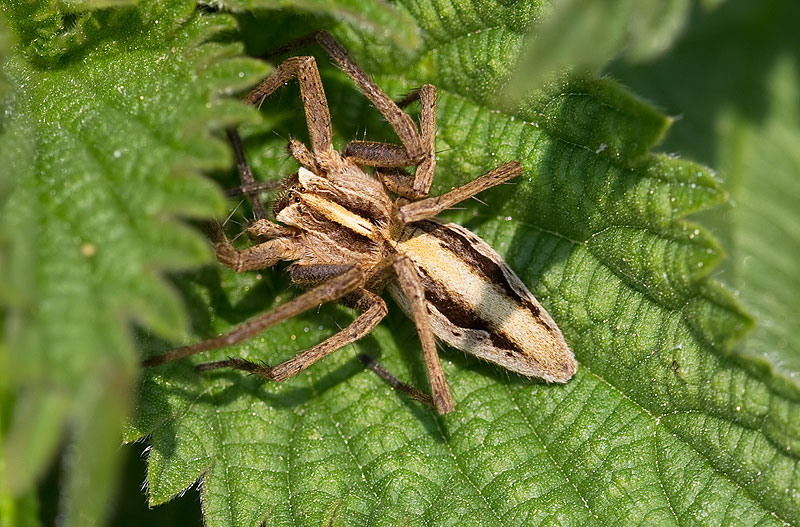
The green frogs here are interesting - they are commonly described as marsh frogs, but the ones I saw were more similar to edible or even pool frogs. Indeed, an article by Julia Wycherley in British Wildlife (14: 260-269 (2003)) states that edible frogs have been identified at Shapwick Heath.
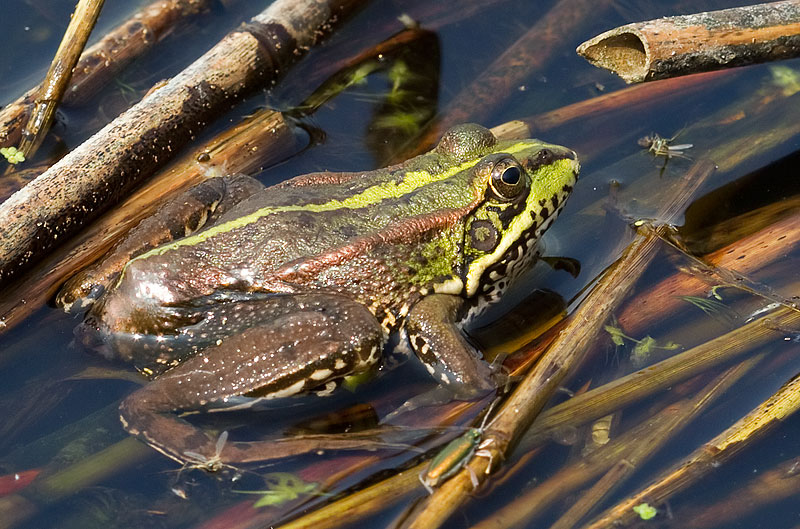
29th - a dog walk in Burrington Ham produced a singing male tree pipit, and my first swift of the year. I also heard a cuckoo.
28th - Haldon Forest in Devon. It's been a great year for the pearl-bordered fritillaries there, and I saw scores of them. Also saw a siskin and several melanistic fallow deer.
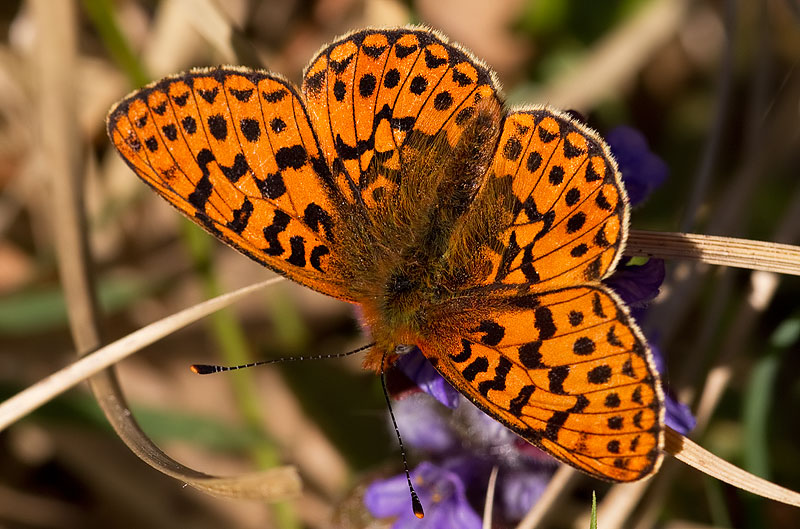
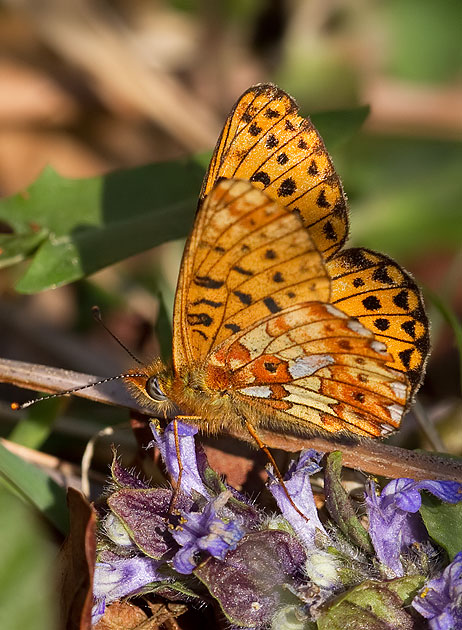
There was quite a lot of mating behaviour going on. There must be considerable sperm competition among males, with receptive females being chased by several male butterflies. The female below has exposed the end of her abdomen prior to mating. In the top photo she attracts the attention of two males. In the bottom one a male approaches the exposed abdominal tip and almost appeared to place its mouth on the tip - perhaps a sperm removal tactic?
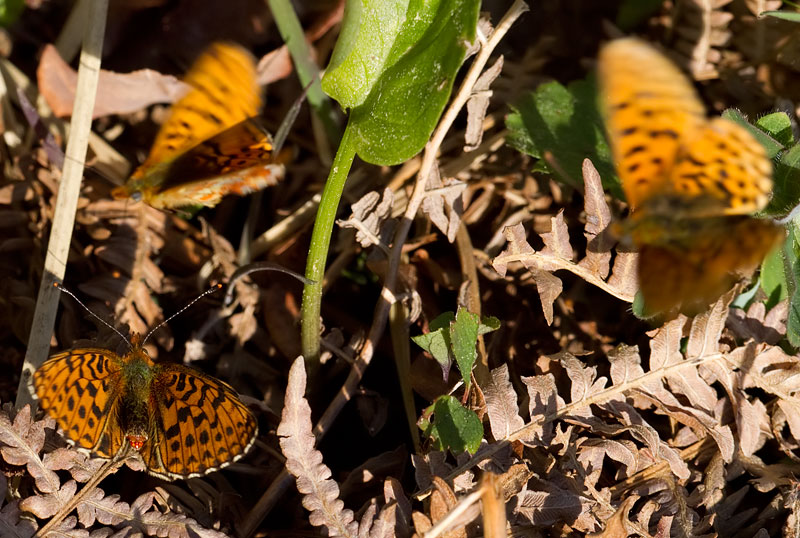
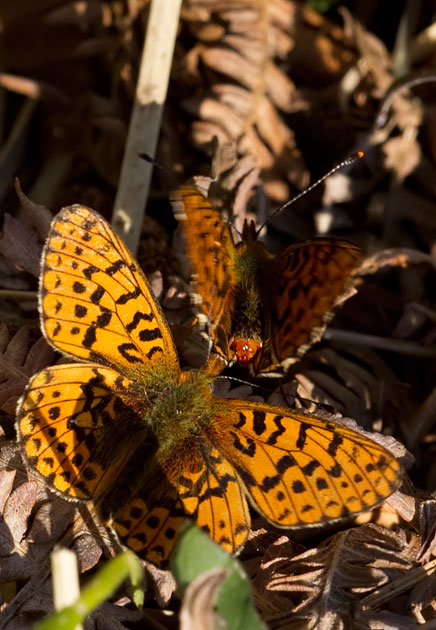
27th - Mendips- no sign of any Dartford warblers in one of their former local strongholds, the species has been hit hard by the last two severe winters. Only three stonechats too.
26th - a morning on the Somerset Levels - 2 yellow wagtails including one bird with some flava genes (probably a 'channel' wagtail) on Tealham Moor, male garganey at Catcott, 3 bittern and a wheatear at Shapwick. Hairy dragonflies and four-spotted chasers on the wing.
24th - little ringed plover at Barrow Tanks, and I photographed this male orange tip with the Coolpix 5100.
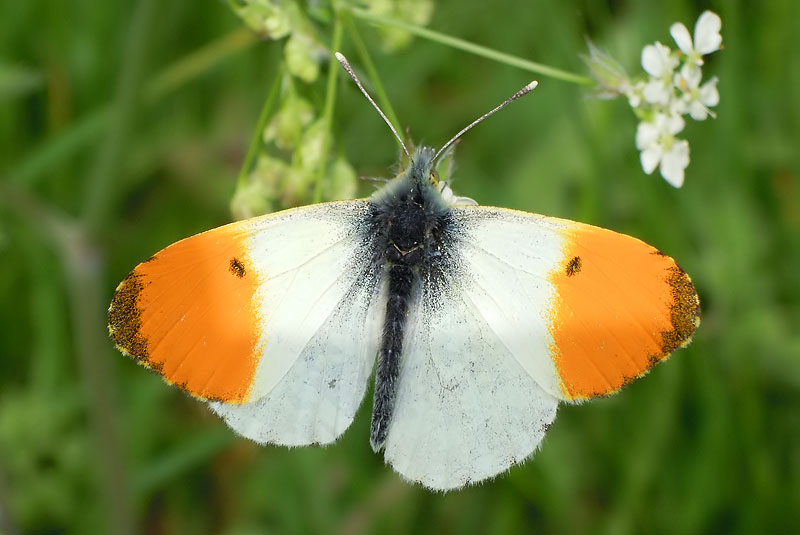
23rd - Chew Valley Lake. The drake ferruginous duck had another tame day, coming within a few metres of the bank at Herriot's Pool. Also present were a first summer little gull, a common tern, a ringed plover, and a sedge warbler.
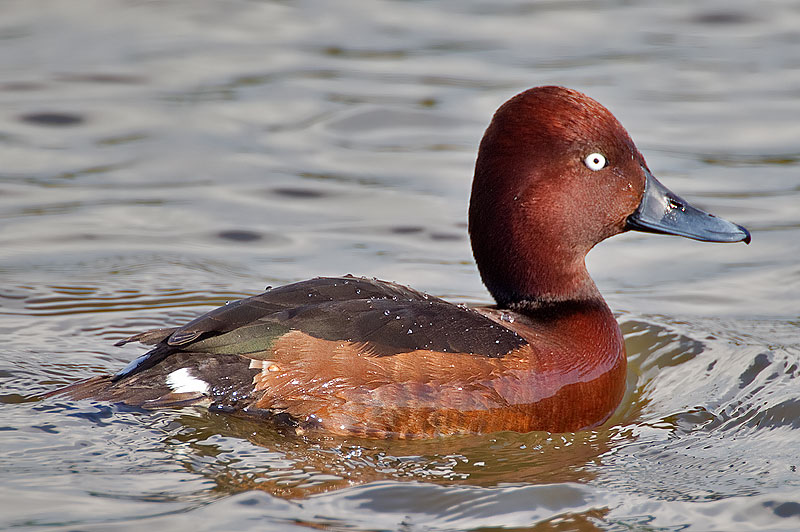
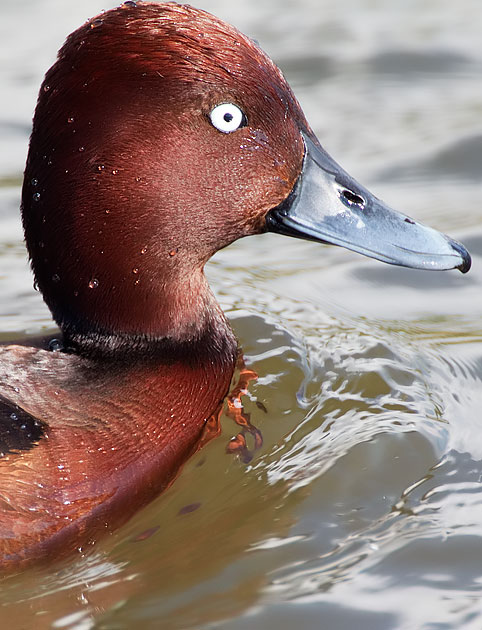
22nd - Shapwick Heath - lesser yellowlegs (below), 2 ruff, a pink-footed goose, 2 hobby and singing cuckoos heard.
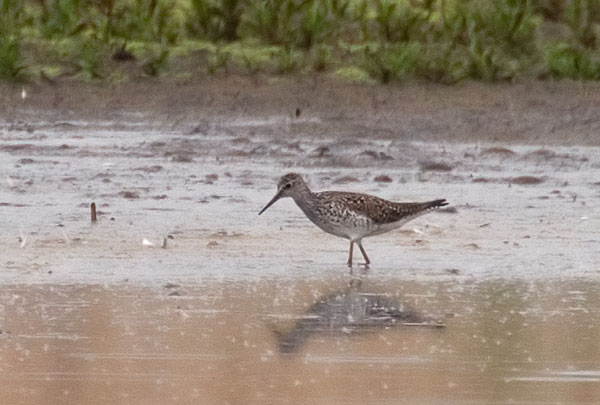
21st - 2 singing whitethroat and a yellowhammer along the cycle track in Flax Bourton.
12th - a nice surprise close to home with a grasshopper warbler reeling along the cycle path between Flax Bourton and Farleigh Green as I cycled to work. It emerged from the brambles and then flew along a hedgerow.
10th - an afternoon trip to Shapwick Heath - a sunning bittern, bar-tailed godwit and a drake green-winged teal were present.

9th - Chew Valley Lake in glorious sunshine - lots of blackcaps about. A greater scaup was on Herriot's Pool. New birds for the year included singing reed warblers, 16 common terns, and a drake garganey on Heron's Green Pool. There was also a female duck that seemed to have some ferruginous genes (prominent white rear) on Herriot's Pool. The photos below are of Chris Sperring's barn owl at the Bird Fair today.
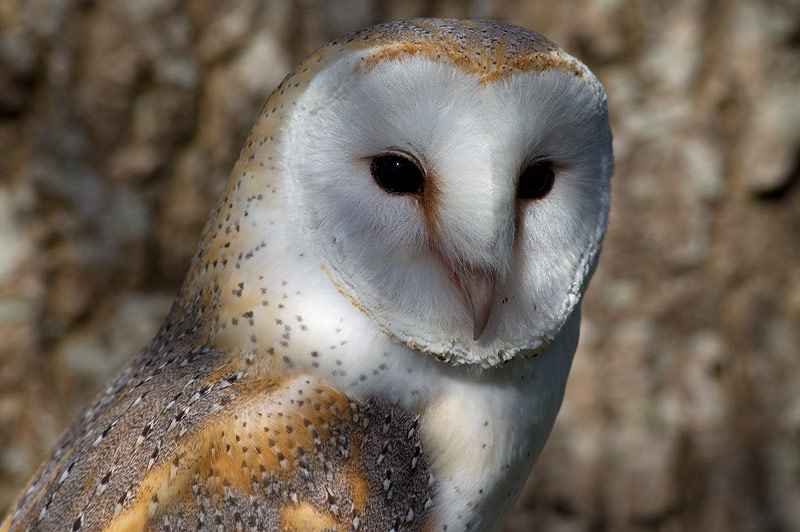
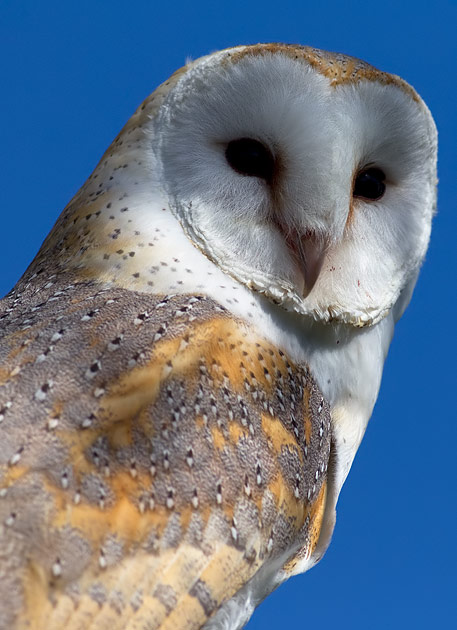
5th - Ed Drewitt found a nice male redstart in Royal Fort Gardens this afternoon, so I made the 100m walk from work to see it at 17.00h.
3rd - highlights at Chew were green sandpiper, oystercatcher, black-tailed godwit, scaup, willow warbler, 3 swallows, 1 house martin, 1000+ sand martins, and 3 Sandwich terns that flew calling towards Herriot's Pool, then flew back towards Heron's Green before disappearing. Two, probably these birds, were seen over Severn Beach arriving from inland not long later.
I spent some time brushing up on my gull identification and ageing. Some first-winter birds (moulting to first summer) - left herring gull, with pale windows on inner primaries, and lesser black-backed gull without these, also with darker wing coverts, mantle and tail band.
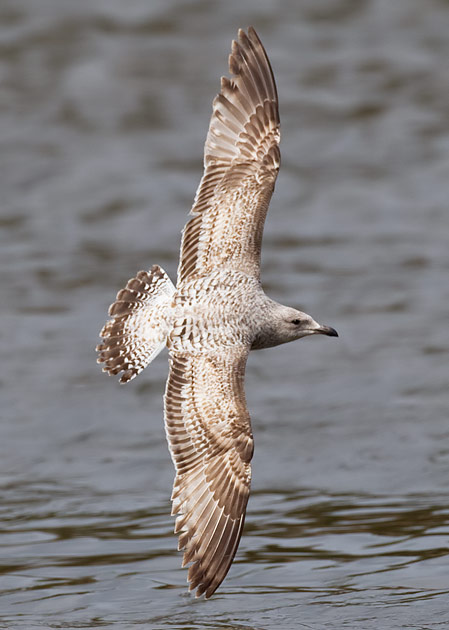
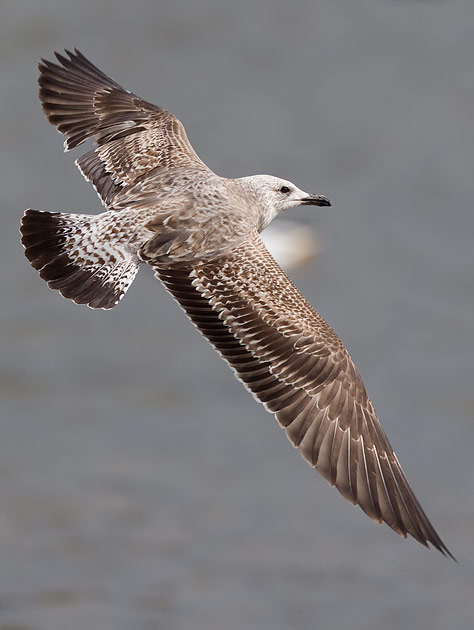
At rest - first-winter herring gull (top) and lesser black-backed gull (bottom).
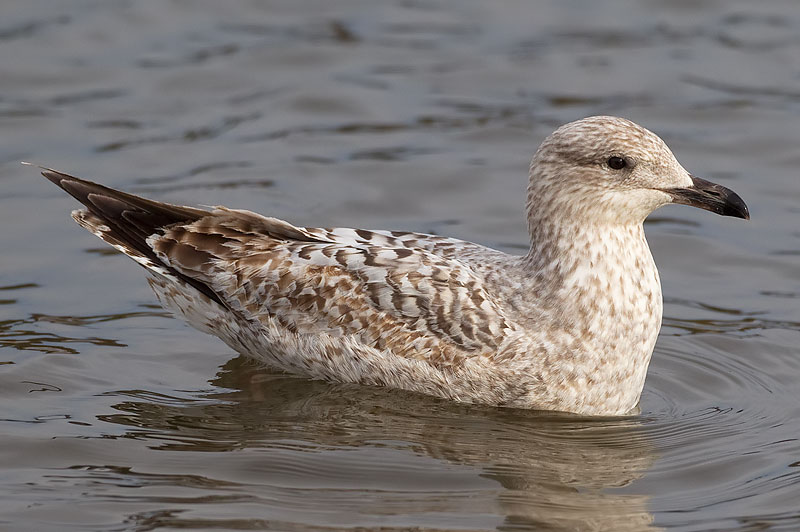
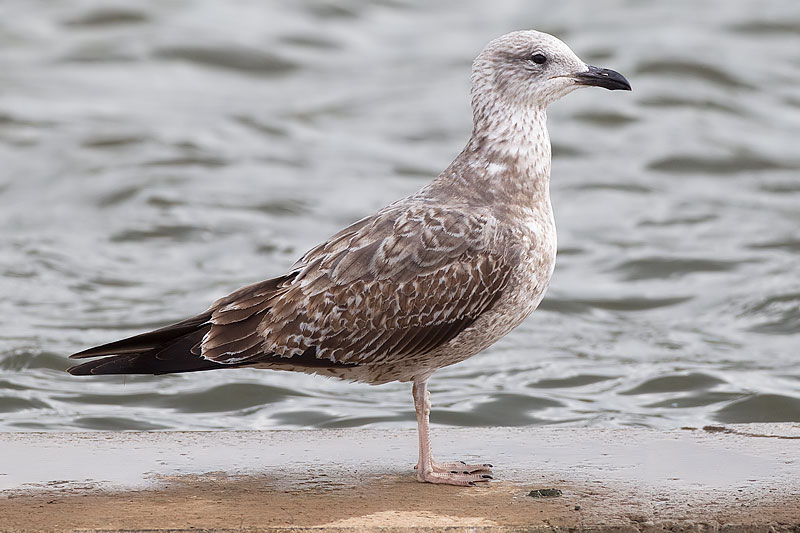
This first-winter lesser black-back (blue AX) was ringed by Peter Rock as a juvenile in Bath on 23 June last summer. It was controlled at Gloucester Landfill Site on 21 January this year. The first four characters of its standard ring ring number - GC48396 - are legible on some photos.
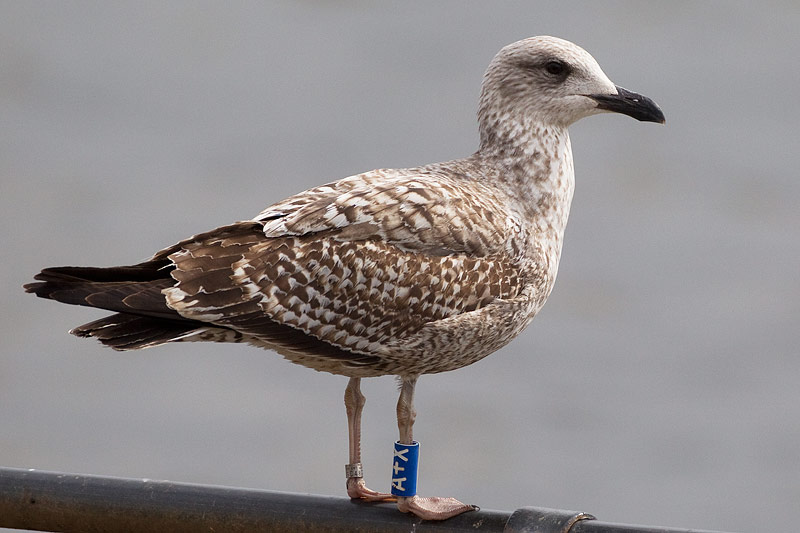
I'm not sure what this one is.
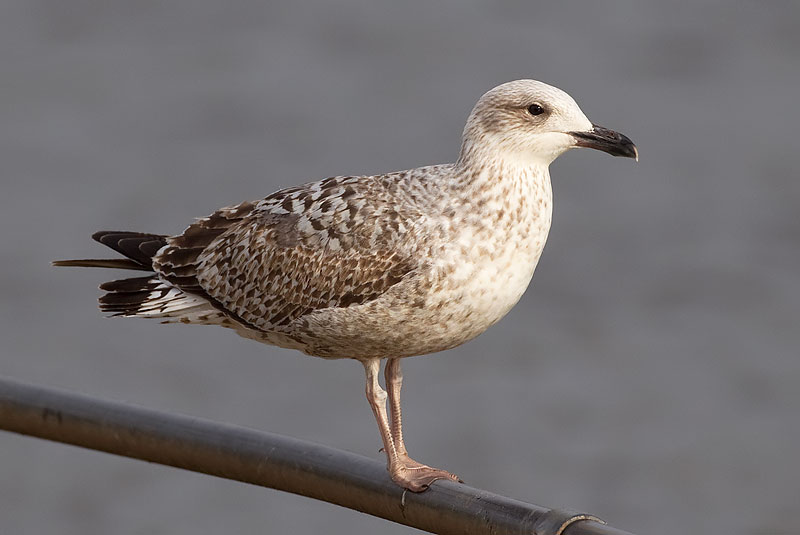
Some second winter birds - herring (left) and lesser black-back (right). The pale panel on the inner primaries is still obvious on the herring gull.
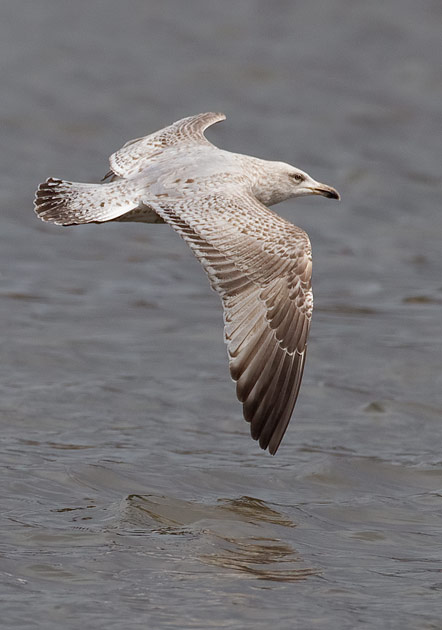
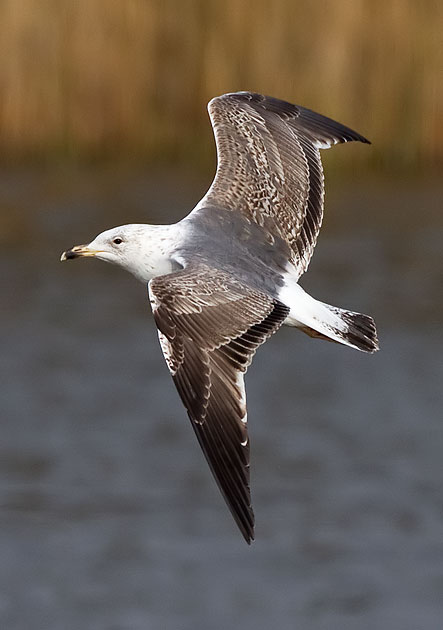
and a jackdaw and a rook.
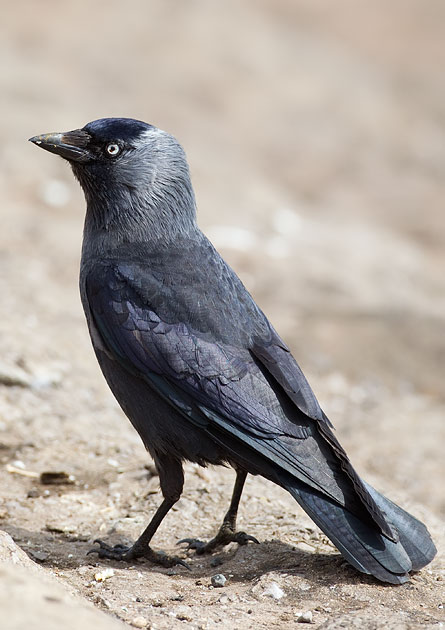
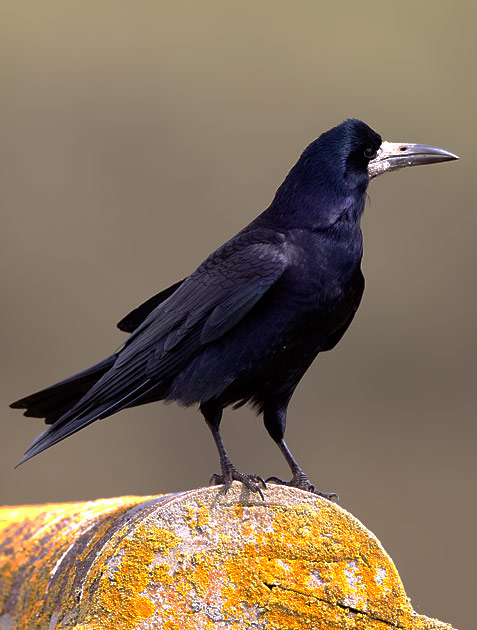
2nd - a greenshank, an oystercatcher, a green sandpiper and a little egret at Chew. There were also several hundred sand martins and several swallows present.
